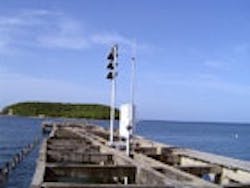Shell to Pay $1 Million Penalty for Clean Water Act Violations in Puerto Rico
Shell Chemical Yabucoa, Inc. of Puerto Rico has agreed to pay a $1,025,000 penalty and spend at least $273,800 enhancing its pollution controls and monitoring to remedy Clean Water Act violations. The agreement, embodied in a proposed consent decree, was filed by the U.S. Department of Justice in the Federal District Court for the District of Puerto Rico together with a complaint detailing Shell’s recent violations.
“This agreement marks a solution to a longstanding series of serious violations,” said U.S. Environmental Protection Agency (EPA) Regional Administrator Alan J. Steinberg. “Not only is Shell paying for these violations with its checkbook, it is taking steps to avoid future problems.”
Shell’s facility, which the company purchased from Puerto Rico Sun Oil, LLC in 2001, has a permit from EPA to discharge treated storm water, process wastewater and sanitary wastewater under the National Pollutant Discharge Elimination System. The system is a requirement of the Clean Water Act, which regulates discharges into surface waters of the U.S. The facility was not in compliance with its pollution discharge permit when Shell purchased it. EPA and Shell agreed on steps the company had to take to bring the facility into compliance after it was purchased.
Shell, however, failed to fulfill the agreement by discharging pollutants in excess of permit limits, discharging pollutants into Santiago Creek (Quebrada Santiago) and the Caribbean Sea (Mar Caribe) at unpermitted locations, failing to report certain discharge data, and lacking adequate operation and maintenance of a discharge pipe into the Caribbean Sea. Shell shut down petrochemical operations at the facility in July 2008, but continues to use its loading and unloading docks and tank farm.
Under the consent decree, Shell must:
• Pay a $1,025,000 penalty;
• Sample contaminated storm water that is discharged into a flood control pond at the facility;
• Install and operate a new rain gauge, which will provide data to operate a water treatment unit during wet weather;
• Inspect a pipeline that had ruptured every six months to ensure no new ruptures have occurred;
• Develop a drainage map of the area around the facility;
• Implement best management practices for the facility’s storm water collection systems;
• Amend the facility’s storm water pollution prevention plan and submit the plan to EPA and the Puerto Rico Environmental Quality Board;
• Dredge a flood control pond to maximize its storage capacity;
• Conduct a hydrology study of the storm water collection systems and the flood control pond; and
• Conduct an engineering study to bring the facility’s storm water discharges into compliance.
And, if Shell restarts petrochemical activities at the facility:
• Install a 1.34-million-gal storage facility for contaminated storm water.
Source: EPA
